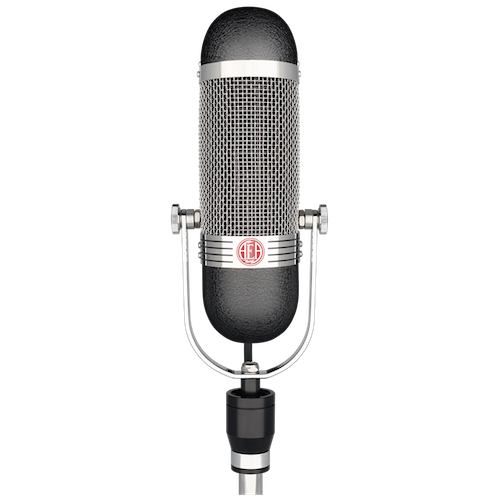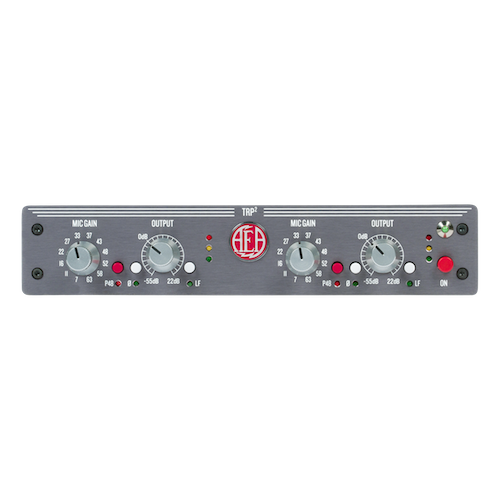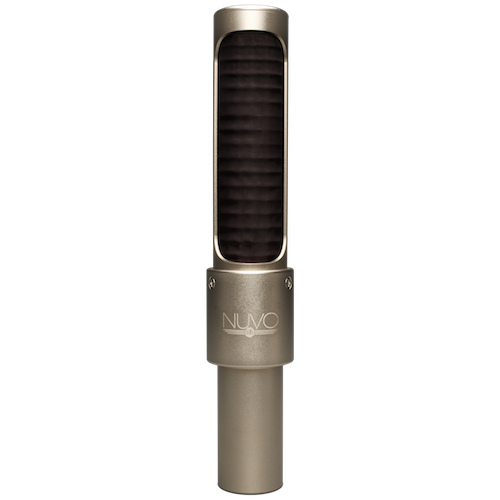The R84 is one of the most popular mics in the AEA line. As AEA’s first original design, many users have questions about its lineage and connection to the R44.
A Rich History
From the 1930s — when it was introduced by RCA — the RCA 44 became a staple in broadcasting and recording studios throughout the world. The RCA 44 has an unmistakable sonic character that Les Paul called the first truly musical microphone ever built. The 44’s unique rich sound is so ingrained in us, we recognize it when we hear it.
As great sounding as the R44 is, it does come with some caveats. First, it has an insane amount of proximity effect that kicks in at six feet (1.8 meters) away from the source. That boost of low-end might not always be the right choice in tiny studios or on cramped stages.
Additionally, the R44 is a monolith of a microphone. It weighs in at a very hefty eight pounds — the weight of a newborn baby. That massive bulk can be difficult to handle in certain situations. Required to support it is a very heavy-duty microphone stand. A stand like this can be difficult to move around, especially for bands on the road.
Same Character, New Package
Recognizing the limitations of the R44, we set out in 2000 to create a smaller, lighter and less expensive version of the R44 with as close to the same sound as possible. As a result of this project, we were able to take the same R44 Big Ribbon element, transformer and puff shield concept, fitting them into a smaller form factor. We borrowed the very same technology that came from RCA in its classic mic from the 1930s, offering similar frequency response and color.
By using a more compact transducer and magnets in the R84, we were able to create a mic that still sounds like the R44, but has less proximity effect and more top end.
Listen to the R84 on Female Vocals
Listen to the R44C on Female Vocals
A Younger and Lighter R44
At a weight of three pounds and a much smaller physical profile, the R84 is far more flexible than the R44. Because of the reduced proximity effect, it can be positioned closer to the source allowing the capture of a more balanced and direct sound with the proper amount of bass. However, it still retains the R44’s warm color.
Choosing an R84 or R44 Depends on Your Application
An R84 at four feet away from a source can sound eerily similar to an R44 at eight feet (2.4 meters) away. The distance difference is due to each microphone’s optimum treble-to-bass ratio. The R44 has equal treble and bass from twenty feet (6 meters) away from the source making it the ultimate far-field ribbon mic. The R84 has equal treble and bass up to ten feet (3 meters) away. This is a very important difference between the two mics because the further away they are positioned from the source, the bass response will change and the more room tone will be captured.
Compare an R84 and R44 on front of kit drums at 4 and feet away
Like all of our microphones, we create tools that allow musical artists to create and tailor a sonic signature to their liking. Sometimes artists want extra bass to make a kick drum sound huge. The R44 is perfect for that application. Other times, a vocalist may want to work closer to the microphone without the low-end that the R44 produces. The R84 is the microphone for that.
 Though they have a similar form factor, these mics couldn’t be more different.
Though they have a similar form factor, these mics couldn’t be more different.








